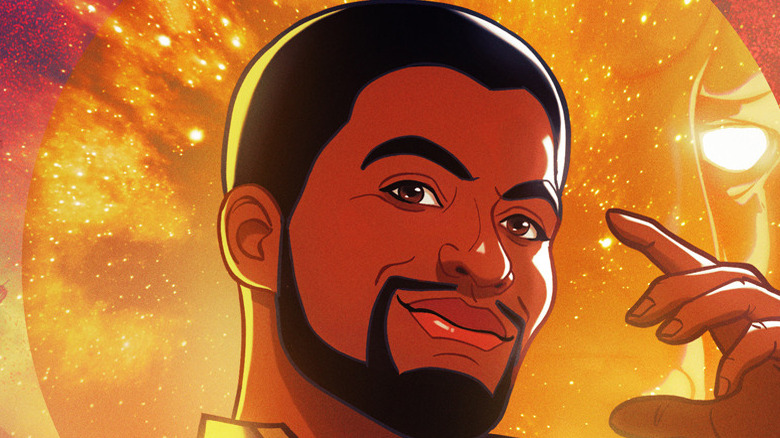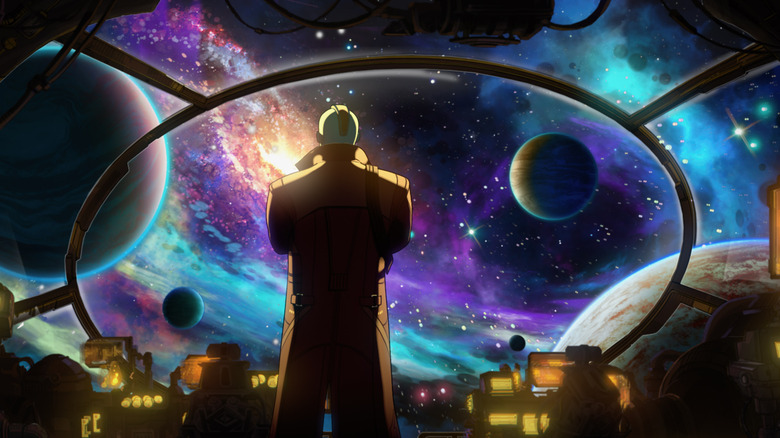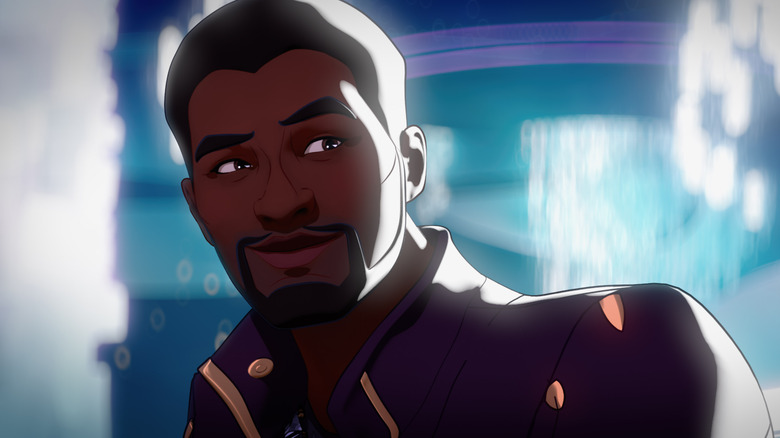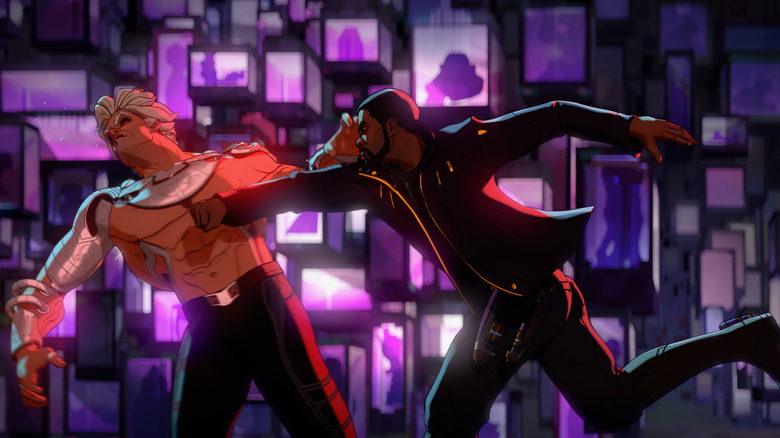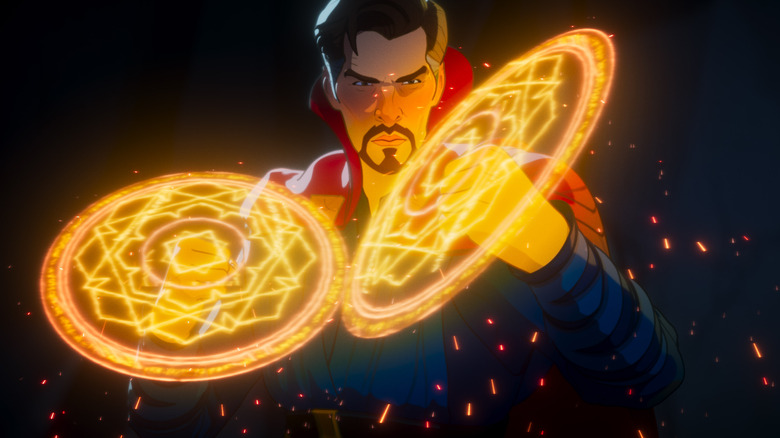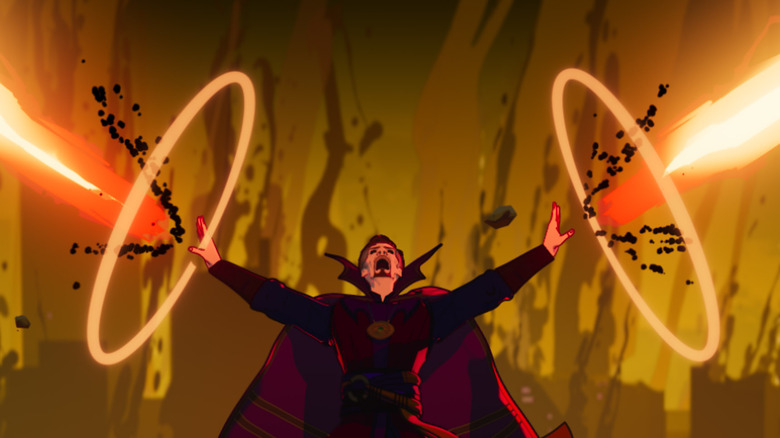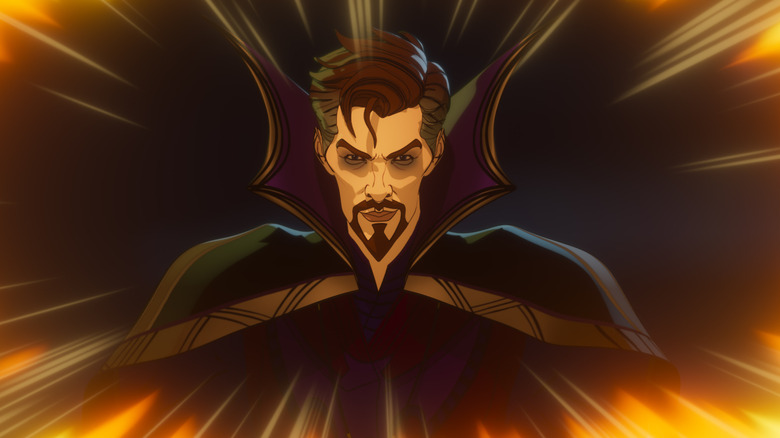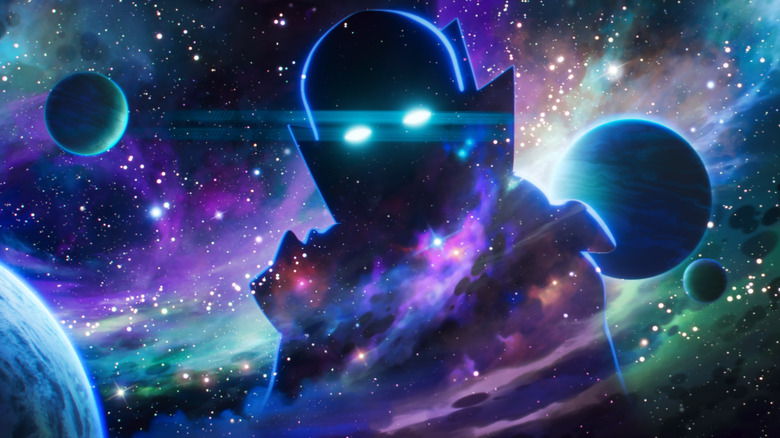What If...? Animation Supervisor Stephan Franck Takes Us Behind The Scenes - Exclusive Interview
Marvel Studios is great at hiring people who get the MCU and its varied catalog of characters. Whether it's the actors, the crew, or behind-the-scenes creators like "What If...?" animation supervisor Stephan Franck, the MCU is so successful because of the people behind the magic — whether or not we see their faces onscreen.
"What If...?" isn't Franck's first Marvel-related project — he was also a storyboard artist on "Spider-Man: Into the Spider-Verse," and his resume was impressive long before that. The animation expert was an animator on the 1995 film "Space Jam," lead animator on "Osmosis Jones," and head of animation on Adam Sandler's "Eight Crazy Nights." He's also worked on hit projects like "How to Train Your Dragon," "Kung Fu Panda: Secrets of the Furious Five," "Despicable Me," and "The Smurfs 2."
Looper spoke to Stephan Franck for an exclusive interview during which he dished on the future of "What If...?," the pressure and honor of animating Chadwick Boseman's final project, and his greatest inspirations for the look and feel of the show.
Animating Marvel's greatest heroes
The animation in "What If...?" is so distinctive and unique. How did you settle on this particular design structure? And were you influenced by any projects that came before?
There are really three influences visually to how we approached the show. One, of course, is the comics, because we're coming from the DNA. So there's a broader, bigger-than-life power of it. Your [Jack] Kirby, [John] Buscema, and all that stuff. The poses of the characters, when they're doing the bigger-than-life stuff, you really want to deliver on that.
And then that gets mixed with our love of cinema. Because everybody on the show is a huge movie person, so we really wanted a style that had the ability to really deliver any movie moments that we wanted to get across without any sort of limitation.
This is where the third influence comes in, which is the J.C. Leyendecker classic American illustration style that brings an elegance, and that dials in the realism versus the exaggeration. And that's just, an elevation that brings it all together and gives you this presentation that is unique, and makes the show as new on the outside as it is on the inside.
Honoring a legend
How do you feel about the final animation for Chadwick Boseman's version of Star-Lord? And if you had the chance, would you change anything about the animation, or do you like how it turned out?
No, I love it. I'll tell you that, out of respect, let's just not go too deep in that direction. But all I can tell you is that at the time of his passing is when these scenes were being animated, so there was obviously a very emotional resonance and a sense of honor. But also, the humility and just hoping to do him justice.
Based on the responses that we get from everybody, and even people who knew him well. That's all I'm going to say, but it was a huge honor, a huge responsibility also.
I think you guys did a phenomenal job on that.
Oh, thank you so much.
The future of What If...?
Were there any proposed storylines that didn't get used that you really wanted to work on? And what would your number one pick be to add onto the show in maybe a season 2 of "What If...?" or beyond?
Well, I can't get into that because I don't want to spoil anything. And who knows what things we felt like, "Oh, this is great. We'll save it for next time?" Cool things are in the works, yeah.
Is there anything that you wanted to do that didn't pan out for any reason?
No, I think it was the whole ... It was an interesting experience for me coming to work with Marvel Studios. And you can enter this group of filmmakers who know these characters and these situations so well because they've been working with them for a year.
And even though I have been a fan of these comics since I was a little kid, still there's a current iteration of them that is alive and well. And so I think by the time I get in there, there is such a profound understanding of these characters and their world. And what's at stake and their emotions. And they're viable together. There's a very strong direction of where we're going with everything.
Connecting the art to the story
Which characters and settings have been the most exciting to work on and which have been the most challenging?
I mean, they were all exciting. There were many times that I was watching an animatic, for instance, for just purely just work reasons, and then I'd find myself completely forgetting the reason why I was watching it — and just being completely engrossed in the stories and everything.
The excitement level is definitely high on everything. But there's definitely stuff where I have to pinch myself. If you told the eight-year-old me, "You're going to get to do Stephen Strange," that would have been just incredible. You've seen the episode, but there's a lot of very ... because it's the nature of Doctor Strange's world, there's a lot of very esoteric, abstract elements to his storytelling. And of course, that's been done really well with movies. That's been done really well with comics. And we had to find our way to render that.
And so, in a weird way, those abstract elements are the most challenging. Because when you're doing the Peggy Carter episode, you have a reference, you know what I mean? You can look at the history books or whatever you need, right? But when you're going into more abstract, esoteric situations, this is when really it's all about imagination, and it's about designs.
What I was talking about is the Leyendecker style. A very elegant shape language that gives sophistication to all these elements really helps you tackle stuff that doesn't have a historical reference or anything like that you can base yourself on. It's all about the artistry and the taste of it. Yeah.
The dark side of Doctor Strange
Doctor Strange's descent to the dark side in Episode 4 is particularly gripping and visually stunning. What were you most trying to accomplish with the aesthetics on that one? And how have you gone about injecting some of that heart and the grit and the darkness that we're seeing in "What If...?" that we haven't really seen in a lot of the other MCU projects?
So, that's what's great about the MCU projects and including our episodes is that there is a whole range of tones. It's like life. I mean, like, no one's life is one tone. And what we're trying to do with the aesthetic approach of each episode is to really be in the service of that tone — and being in the service of those emotions, whether it's about excitement or whether it's about grief. Everything that's visual is there to support these emotions.
And for me, some of the most interesting scenes to animate are really when it's all about emotions — and when it's about subdued emotions. When it's about characters not necessarily saying what they mean or meaning what they say, or having something that they're feeling, but they can't say it. And just playing all that stuff in the animation is very subtle. And that's when the poetry of the art form to me really shines the most.
Finding the joke
Can you walk us through what a typical day as the show's animation supervisor might look like? And have you ever had to put out any fires or smooth anything over that was a rough patch or anything?
As far as the animation of a show like this, I mean, there's a lot of different involvements. It's not a segmented process. It's just like some scenes. When you're doing a scene in any movie, it's just like, the question I always ask myself is, "Where does the joke live? Does it live in story? Does it live on the page of the script?"
Sometimes some jokes truly come away. And by jokes ... something cool and exciting comes alive sometimes when the sound effects comes in, and then that's when everything is there and exactly right. First and foremost, it's a holistic filmmaking process where you have to understand that even though, "Okay, I'm more working on this step in the process, the question is, how does this step work off of what came before and with what will come after in a way that is holistic and everything's working together"?
So that's the first thing. Then it's about working with the animators, and animators are like actors, but they work with pencils. They create a performance, and you respond to that performance. And you guide it by providing context for it. But sometimes you're talking to the person. Sometimes you have to draw something for the person.
A collaborative effort
I did a lot of drawing on the show because sometimes ... again, when we get into really esoteric stuff or when we're really trying to connect with the ... "Yeah, this is great. This looks like something that's very powerful, but it's not quite yet powerful enough." It's just like, you can't tell somebody, "Make it 22 percent funnier." You cannot tell them, "Make it 22 percent more powerful." You have to draw it. You know what I mean?
It's a combination of all these elements and working with all the super-talented animators to craft these performances and make sure that they work with all the other scenes in the movie. With all the whatever is going to technically happen to the scene after and so and so forth.
It's that kind of very holistic process, but at the same time, extremely detail-oriented. Where I can go, "Yeah, you see, move this head from here to here." And you do that, and that's the magic of animation. Sometimes just doing that makes a scene finally explode. So it's all those things.
MCU fans can tune into new episodes of "What If...?" airing Wednesdays on Disney+.
